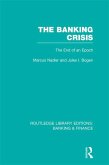Seminar paper from the year 2010 in the subject Business economics - Banking, Stock Exchanges, Insurance, Accounting, grade: 1,0, Cologne University of Applied Sciences, course: Effective Environmental Scanning, language: English, abstract: Since the foundation of the European currency union in 1998, the European Central Bank and the Federal Reserve System represent the most influential two central banks in the world. In this comparison their general structure, tasks and objectives and monetary policy instruments are contrasted. The institutions and bodies of the banks are explained in the second chapter, to see the structural differences. While the ECB defined price stability as its primary objective, the Fed has several equal objectives. These objectives and further tasks of the central banks are described in the third chapter. To steer and implement their objectives and tasks, the central banks have monetary policy instruments at disposal, whereas open market operations and the minimum reserve system play a key role. These instruments are explained in chapter 4 in general and their arrangement and implementation at the example of the ECB. Then the Feds corresponding instruments are contrasted with the ECB, because in my opinion the ECB has a role model position, in this context. Then follows an elaboration of the instruments standing facilities and discount policy. These instruments are examined in two separate subchapters, due to the fact that the implementation of these instruments is only made by the ECB or the Fed. In the last part I examined the reactions of the ECB and the Fed to compensate the risks of the current financial crisis. The attention is directed to the evaluation of the quality and effectiveness of the implemented monetary policy instruments. At the end the results are summarized.
Dieser Download kann aus rechtlichen Gründen nur mit Rechnungsadresse in A, B, BG, CY, CZ, D, DK, EW, E, FIN, F, GR, HR, H, IRL, I, LT, L, LR, M, NL, PL, P, R, S, SLO, SK ausgeliefert werden.









